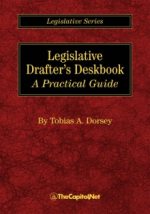Leadership in Congress is particularly important as whichever party has the majority garners the responsibility of choosing committee chairs, setting agendas and scheduling legislation for consideration. Understanding the congressional leadership’s priorities helps you understand future legislation. There are many ways in which you can determine those priorities.

There are critical times when party leaders refine as well as promote their messages. These times include before and after significant votes, before members of Congress return home during congressional recesses, and before and after presidential messages, including the State of the Union.
One way in which you can gain a good indication of the priorities that the majority party will pursue during each two-year session is to look at the first ten bills that are introduced in the Senate and the House–often referred to as the “top ten” and numbered 1 through 10. You can find more information about bills introduced in the Senate at Thomas and reading through the S.1 through S.10 texts and statements. Legislative priorities for the House can be found in bills that have been sanctioned by leadership and which are numbered H.R.1 through H.R.10. Legislative priorities for the minority in the Senate and House bills are usually numbered 11 through 20. You can find information about bills at Thomas.
The statements that are issued by party leaders on the House or the Senate floor are also important. Quite often leaders will make statements prior to start of the day or at important moments such as just before or just after consideration of an important issue.

While having information available from the “inside” can be beneficial, it is still important to know what leaders say publicly, which is why it is important to monitor the news media. Other important areas where you can find critical information related to leadership priorities include the Daily WhipLine and the Senate Daily Floor Schedule (right hand column).
You can learn more on this topic in our How to Find, Track, and Monitor Congressional Documents: Going Beyond Thomas course and our Capitol Hill Workshop.
Reference: Lobbying and Advocacy, by Deanna Gelak, Section 3.17 How to Determine and Track Congressional Leadership Priorities
Courses
- Congressional Operations Briefing – Capitol Hill Workshop
- Drafting Federal Legislation and Amendments
- Writing for Government and Business: Critical Thinking and Writing
- Custom, On-Site Training
- Drafting Effective Federal Legislation and Amendments in a Nutshell, Audio Course on CD
- Congress, the Legislative Process, and the Fundamentals of Lawmaking Series, a Nine-Course series on CD
Publications

Legislative Drafter’s Deskbook: A Practical Guide

Pocket Constitution

Citizen’s Handbook to Influencing Elected Officials: A Guide for Citizen Lobbyists and Grassroots Advocates

Congressional Procedure
CongressionalGlossary.com, from TheCapitol.Net
For more than 40 years, TheCapitol.Net and its predecessor, Congressional Quarterly Executive Conferences, have been teaching professionals from government, military, business, and NGOs about the dynamics and operations of the legislative and executive branches and how to work with them.
Our custom on-site and online training, publications, and audio courses include congressional operations, legislative and budget process, communication and advocacy, media and public relations, testifying before Congress, research skills, legislative drafting, critical thinking and writing, and more.
TheCapitol.Net is on the GSA Schedule, MAS, for custom on-site and online training. GSA Contract GS02F0192X
TheCapitol.Net is now owned by the Sunwater Institute.
Teaching how Washington and Congress work ™

